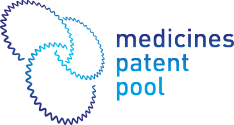Today, the fundamental healthcare needs of billions of adults and children are not being met. Adults and children are suffering and dying from treatable conditions. Why? Because half of the population living in low- and middle-income countries (LMICs) still lacks proper access to essential medicines and healthcare and millions of people face catastrophic health expenditures that drive them into poverty. The COVID-19 pandemic has exacerbated such inequities.The Medicines Patent Pool (MPP) exists to help people in LMICs live longer and healthier lives. We do this by driving down the costs of vital medicines and technology through licensing and technology transfer, and working closely with others in public health to ensure better access to the products and technologies that people in LMICs need.

people
MPP-licensed products each year
up from 15 million annually
patient-year
of products
by MPP licensees, creating
savings of more than
community in this
period alone
To help us reach these targets, MPP works with partners to manage intellectual property (IP) to better address public health needs. Our new strategy will further exploit our unique expertise in negotiating and implementing licensing and technology transfer agreements – and always from a pro-public health perspective. We will expand access to innovative health technologies, improve the availability and affordability of health products, facilitate the development of formulations for the most vulnerable, and support a diversified and sustainable manufacturing capacity.
But we cannot and do not expect to achieve this on our own. MPP is, by definition, collaborative and inclusive, so we work with a range of key partners. Among them are our founding organisation Unitaid, as well as the World Health Organization (WHO), governments, originator and generic pharmaceutical companies, civil society organisations, funders and many others.
HOW OUR MISSION WILL TRANSLATE INTO IMPACT
MPP will focus on five closely related but separate goals to realise our ambitions over the next three years.
OUR STRATEGIC GOALS


Core activities
- Developing an enabling environment
- In-licensing
- Out-licensing & licence management
- Patent mapping
- Supporting development & transfer of technology
- Supporting access

Enablers
- Prioritisation
- Policy & advocacy
- Partnerships
- Patent info
- Regulatory info
- Upstream access commitments
- Communications
- Resource development
- Organisational effectiveness
- Review & learning
new licenses
concluded
new products
developed
by licenses and available for procurement, including 1 new formulation for children
vaccine
manufacturers
have received an initial mRNA technology transfer package
million
people
per year benefit from access
to MPP-licensed products
USD 1.2 billion savings
VIDEO – OUR 2023-2025 STRATEGY
CRITICAL ENABLERS THAT LAY THE GROUNDWORK FOR OUR APPROACH
We have grounded our work in a series of critical ‘enablers’, which are key to implementing our new strategy and reaching our goals.






